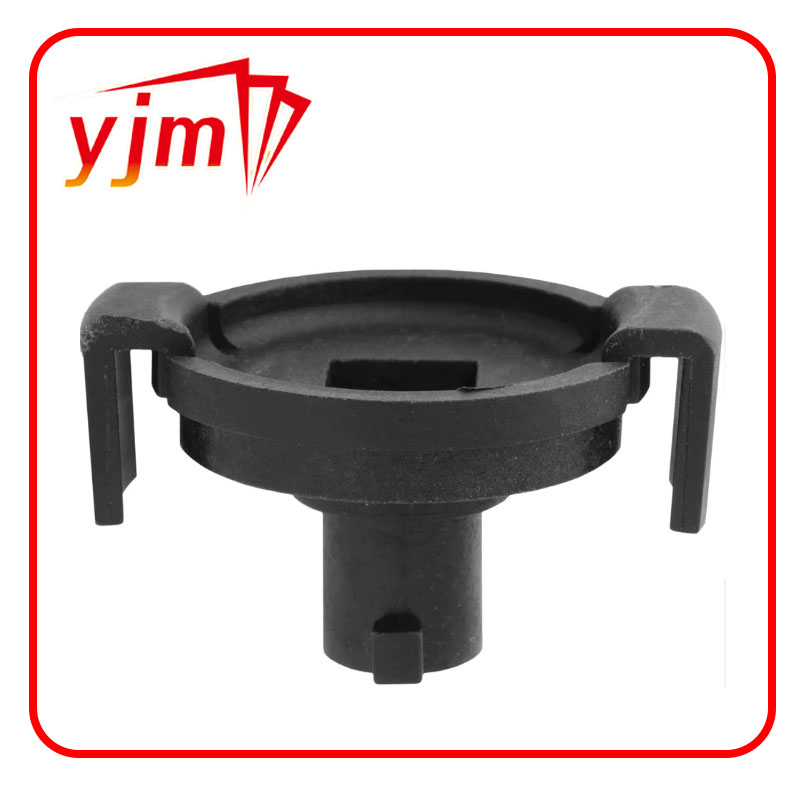o ring hydraulic seals
Understanding O-Ring Hydraulic Seals Function, Applications, and Benefits
In the realm of engineering and fluid mechanics, sealing solutions are crucial for the functionality and longevity of hydraulic systems. Among various sealing technologies, O-ring hydraulic seals have gained widespread popularity due to their simple design, effectiveness, and versatility. This article delves into the characteristics, applications, and advantages of O-ring hydraulic seals, highlighting their significance in modern machinery and equipment.
What is an O-Ring Hydraulic Seal?
An O-ring is a toroidal-shaped elastomeric sealing device, typically made from materials like nitrile rubber, silicone, or fluorocarbon. When used in hydraulic applications, the O-ring is fitted into a groove between two mating surfaces. As hydraulic fluid pressure is applied, the O-ring deforms slightly, creating a tight seal that prevents fluid leakage from the joint. This functionality makes O-rings essential components in various hydraulic systems, including pumps, cylinders, and valves.
Material Selection
The effectiveness of an O-ring hydraulic seal is heavily influenced by the material chosen for its fabrication. Different materials offer distinct properties suited for various environments and applications
1. Nitrile Rubber (NBR) The most common material, providing excellent resistance to petroleum-based fluids, temperature, and abrasion. It is suitable for general hydraulic applications.
2. Viton® (FKM) Known for its high-temperature resistance and durability in aggressive chemical environments, making it ideal for specialized hydraulic applications.
3. Polyurethane (PU) Offers outstanding wear resistance and is often used in high-pressure applications, although its temperature range may be limited compared to other materials.
4. Silicone Offers excellent temperature resistance but is typically less effective in high-pressure hydraulic applications. It is mainly used in low-pressure or static sealing applications.
Applications of O-Ring Hydraulic Seals
O-ring hydraulic seals find applications across a multitude of industries due to their versatility
1. Automotive Found in power steering systems, brake systems, and hydraulic actuation components, O-rings ensure efficient operation by preventing fluid leaks.
o ring hydraulic seals

2. Industrial Machinery In equipment like hydraulic presses and molds, O-rings are employed to maintain pressure and ensure proper functioning under demanding conditions.
3. Aerospace Used in various aircraft systems, O-rings ensure airtight seals in hydraulic and pneumatic systems, contributing to safety and performance.
4. Oil and Gas In drilling and extraction operations, O-ring seals are critical for maintaining pressure integrity and preventing the escape of hydrocarbons.
5. Manufacturing Equipment Enable proper lubrication and pressure maintenance in machinery, minimizing wear and ensuring efficiency.
Benefits of O-Ring Hydraulic Seals
The popularity of O-rings in hydraulic systems can be attributed to several key benefits
1. Cost-Effectiveness O-rings are relatively inexpensive to manufacture and install, making them a cost-effective sealing solution for various applications.
2. Easy Installation Their simplistic design allows for straightforward installation and replacement, reducing downtime in operations.
3. Versatile O-rings can be used in numerous applications and environments, making them suitable for a wide array of industries.
4. Reliable Performance When properly installed and maintained, O-rings provide reliable sealing performance, minimizing the risk of leakage and machinery failure.
5. Customizable With a variety of sizes and material compositions available, O-rings can be tailored to meet specific application requirements, ensuring optimal performance.
Conclusion
O-ring hydraulic seals play a pivotal role in the functionality and reliability of hydraulic systems across multiple industries. Their effectiveness in preventing fluid leakage, combined with their cost efficiency and ease of use, makes them an indispensable component in engineering and manufacturing. As technology advances and industries evolve, the development and application of O-ring seals will continue to be integral in achieving better performance and reliability in hydraulic systems. Understanding their properties and benefits is essential for engineers and technicians involved in designing and maintaining hydraulic equipment, ensuring that systems operate smoothly and effectively for years to come.
-
Simplifying Oil Changes: A Comprehensive Guide to Oil Drain Plugs and Their Variants
News Aug.04,2025
-
Mastering Oil Drain Maintenance: Solutions for Stripped, Worn, and Upgraded Oil Plugs
News Aug.04,2025
-
Fixing Oil Pan Plug Issues: Leaks, Stripped Nuts, and the Right Replacement Solutions
News Aug.04,2025
-
Everything You Need to Know About Oil Drain Plugs: Sizes, Fixes, and Upgrades
News Aug.04,2025
-
Choosing the Right Oil Drain Plug: A Guide to Sizes, Materials, and Drain Innovations
News Aug.04,2025
-
A Complete Guide to Automotive Drain Plugs: Types, Problems, and Innovative Solutions
News Aug.04,2025
-
The Ultimate Guide to Car Repair Kits: Tools and Essentials Every Driver Should Own
News Aug.01,2025
Products categories















